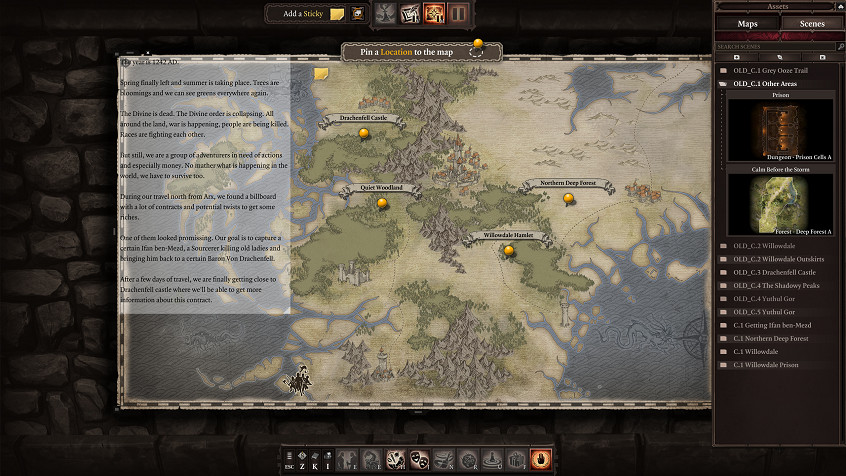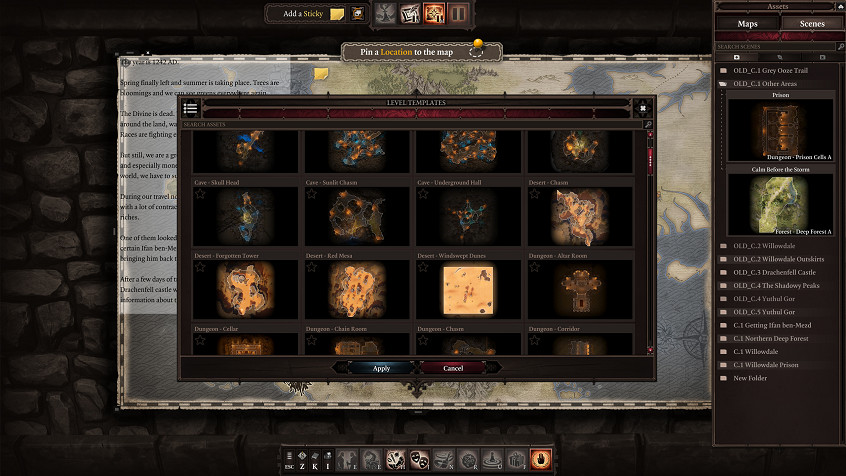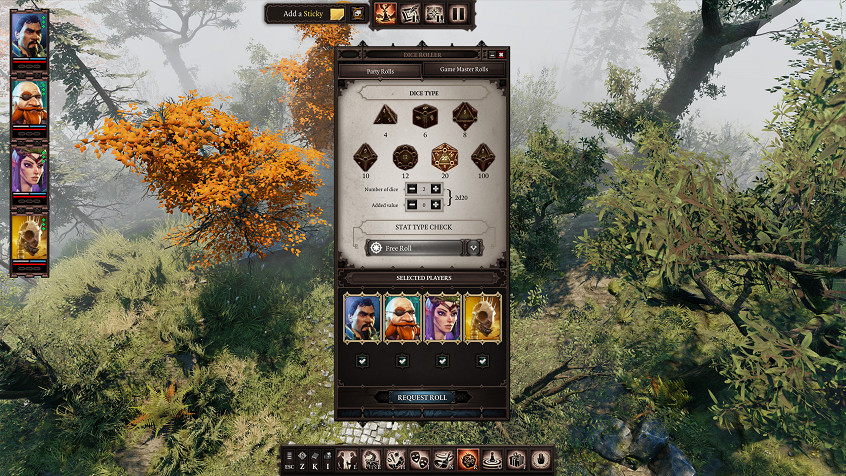Divinity: Original Sin II Master Mode is the Essence of Tabletop RPGs
Jumping from the confines of pen & paper, Larian Studios has created a comprehensive, intuitive Game Master system within the game of Divinity: Original Sin 2. A new age surfaces as the Game Master mode exceeds previous attempts to allow players to act as the all-knowing, story weaving dungeon master. With the ability to change every little detail of campaigns, in this mode, every choice is given to the players.
Divinity: Original Sin 2 is truly a gift upon the classic turn-based RPG genre, containing more content than other AAA titles on the current market. The base game contains the extensive and tactically challenging single or multiplayer campaign. Arena mode is offered to test your mettle against friends, allowing a highlight on the tactical elements of the combat system. Along with that comes the Game Master mode, a digital mirroring of Dungeons & Dragons. It is a complete package with the expressed push of the modding scene. But singing praises is best left to the jester with a lute; let’s delve in to see what makes this game special for fans of the tabletop RPG.
Creating a Campaign
The foundation of a good campaign starts with the initial spark of creativity, though a title and a succulent description will help to breath life into the vision. Players need only to select and name the project being crafted before hopping into the central map screen. There is a variety of off-the-rack maps, with the option to import maps straight into the game.
Intimidating at first, maps have a simplified UI and a lot of creative freedom. Pins on the map act as location markers for the many adventures; placing one is as simple as dragging your mouse to the desired destination. Sticky notes are included for reminding Game Masters of important in-game events. With the option to publish adventures, these notes have a secondary function of helping other game masters run campaigns built by the community.
There is wide array of tools to implement story for those who love to weave the narrative threads of a campaign. To keep players on track, text (such as current objectives) can be displayed on the screen. And the party-tracker symbol reminds all players where the current adventure is taking place within the realm. Differing from the tabletop counterpart of Dungeons & Dragons, this mode does require more effort to fully enjoy. The tools are given to craft the campaign of the player’s desires.
Narration of the story is handled through vignettes that can be created from the central page. A completely optional feature, vignettes can be helpful with creating a dialogue with NPCs or displaying the thoughts of the adventuring party. These pop-up panels can be customized with images to unify the setting of the game with the player-created narrative.
Setting the Stage
Upon selecting a location, the player is offered level templates for ease of access. If the templates are limiting to the game master’s creation, players can take advantage of the Divinity Engine 2 Data. Provided by Larian Studios, this free add-on to the base game presents the engine data, allowing for easy modding and sculpting of levels. To combat the overwhelming menus, Larian Studios provided a tutorial to navigate the basics of this complex machination of unlimited potential.
If modding every detail of a campaign is a bit heavy, the option of templates is by no means minuscule. Ranging from deserts, towns, houses and the simple paths of forests, a chunk of locations for scenes to be played out is available to creators. Selecting a location is as simple as clicking on an established pin and binding it to the level. From there the game master can access the levels and begin customization.
The crux of the Game Master mode is in the design screen. Mood, tone, and obstacles that the adventuring party come across is all made within the level customization screen. Customization options range from changing the weather to creating the perfect boots to give to a lowly peasant. Though there are a lot of different aspects to designate, it is all organized and becomes less daunting with practice. Needless to say, there is an abundant library of items from which players can select to create the desired aesthetic.
Creating the Experience
With a campaign design completed, all that is left is to gather a group of players and start the fun. The game master controls every aspect of the adventure, trying their best to maintain the foundation of the world while the players craft the story.
Within the game field, many options become available to best ensure every need in a game is met.
First, vignettes bring about whatever their purpose entails, whether it is dialogue, scenery or a comical remark. Sticky notes can be placed and are never seen by players, reminding game masters of further intricacies in the level.
Another addition is the implementation of die rolls to determine the task at hand. From solving puzzles to recalling lore of an ancient empire, die rolls draw in a good way to combat the unexpected. All of the tools present in the map editor are also at the game master’s disposal during the course of the scene.
Combat is controlled by an icon that indicates whether the current situation is hostile or peaceful. Enemies and NPCs can be commanded by the game master, as if they were that character. This offers a more tactful way of performing encounters, allowing control over the encounter’s difficulty. The game master can also afflict a player with a debuff by clicking on the unit and granting it to them. Typing a “-1” within the field will cause an infinite duration of that status. The same option exists for ground effects that may become apparent.
Conclusion
This overview of the Game Master mode in Divinity: Original Sin 2 will, hopefully, incentivize others to create epic tales of strife and heroes demolishing all evil that comes into their sight. With the expansive freedom offered within this game mode it is impossible to list the full breadth of functions available to the creator. Imagination is the only limitation, a philosophy that is fully realized when incorporating the design tools provided within the modding features.
No related posts.









[…] more information on Divinity: Original Sin II, visit its official […]
Imagine if this game manage to support crossplay… So many possibilities, so many different people to play these customized campaigns!
Cross-platform play is certainly the ideal form of multiplayer for many games. This, however, would be especially fun, as there is no threat of unfair advantages for players on a certain system. Maybe someday we’ll see cross-platforming as a norm in the industry. 😀